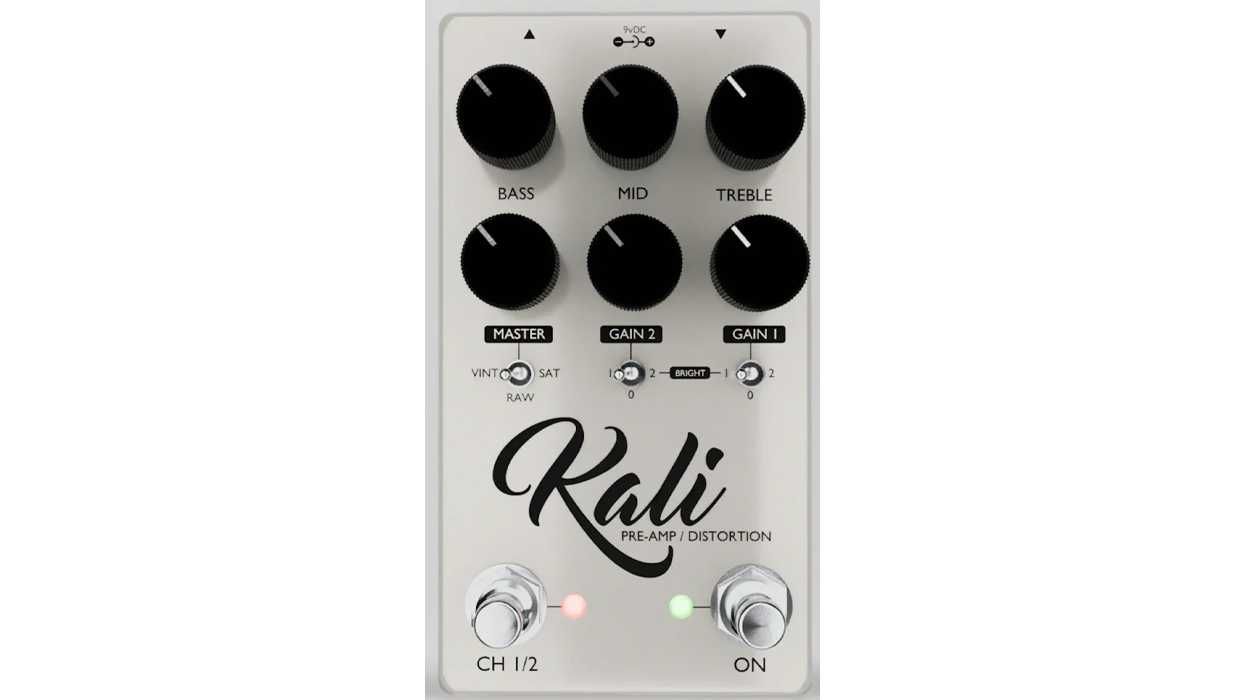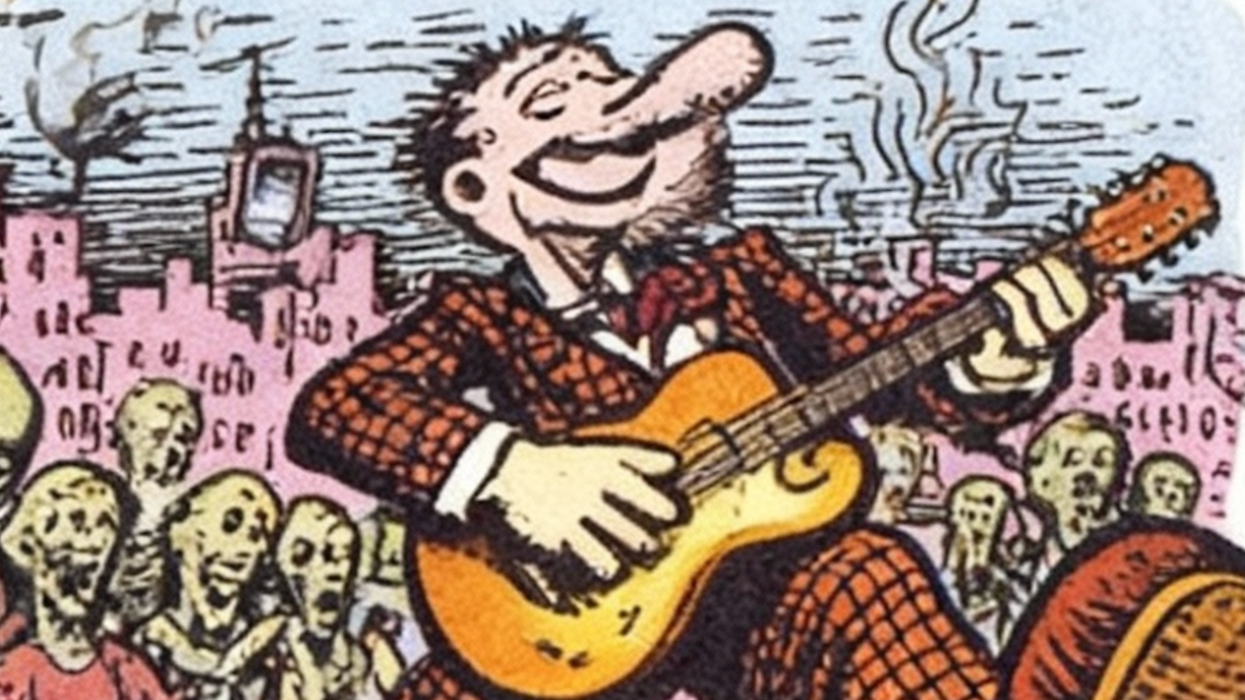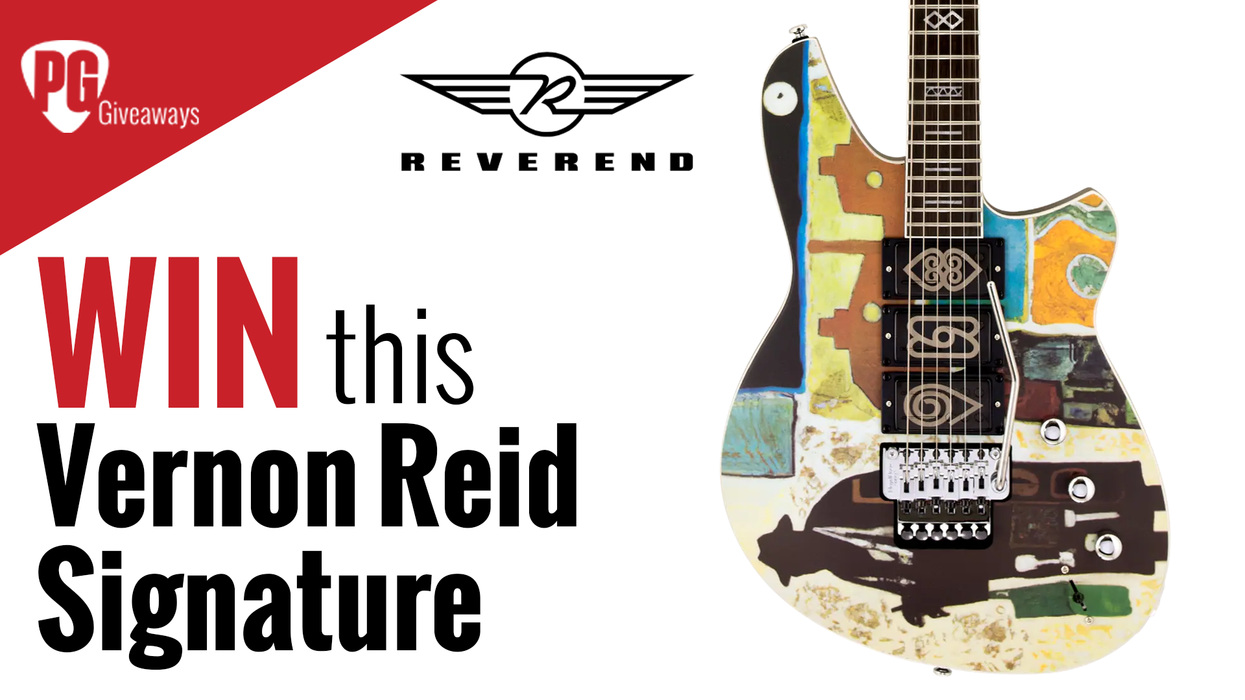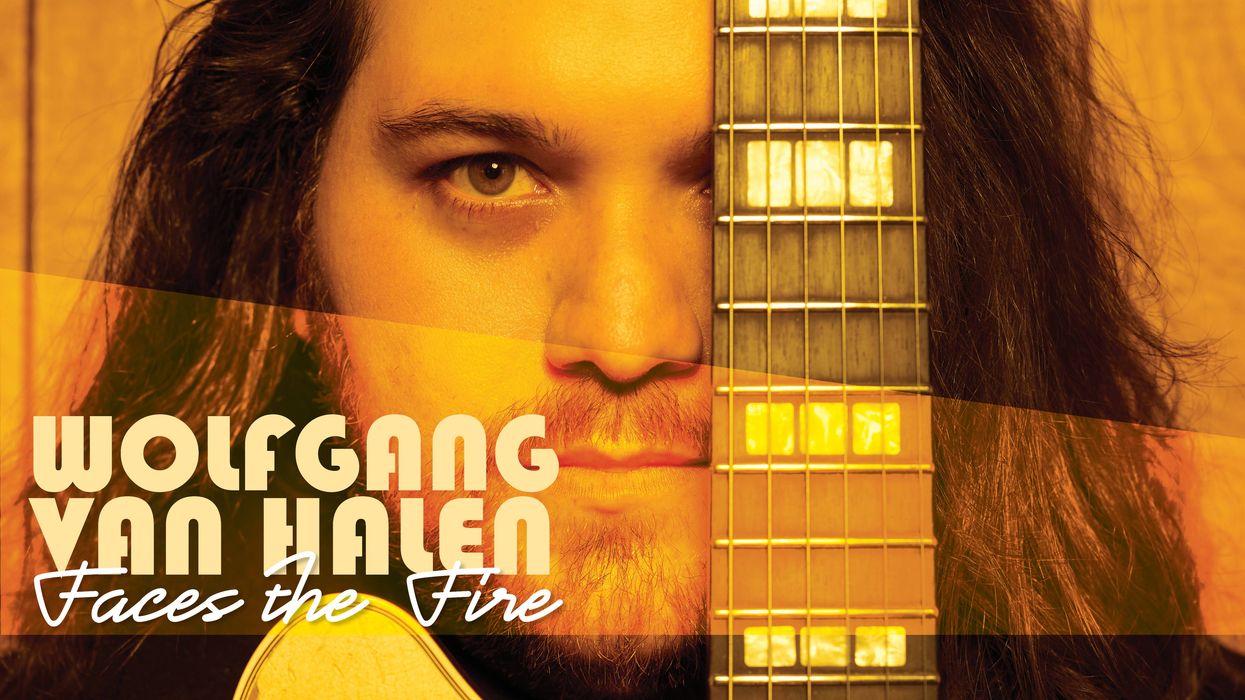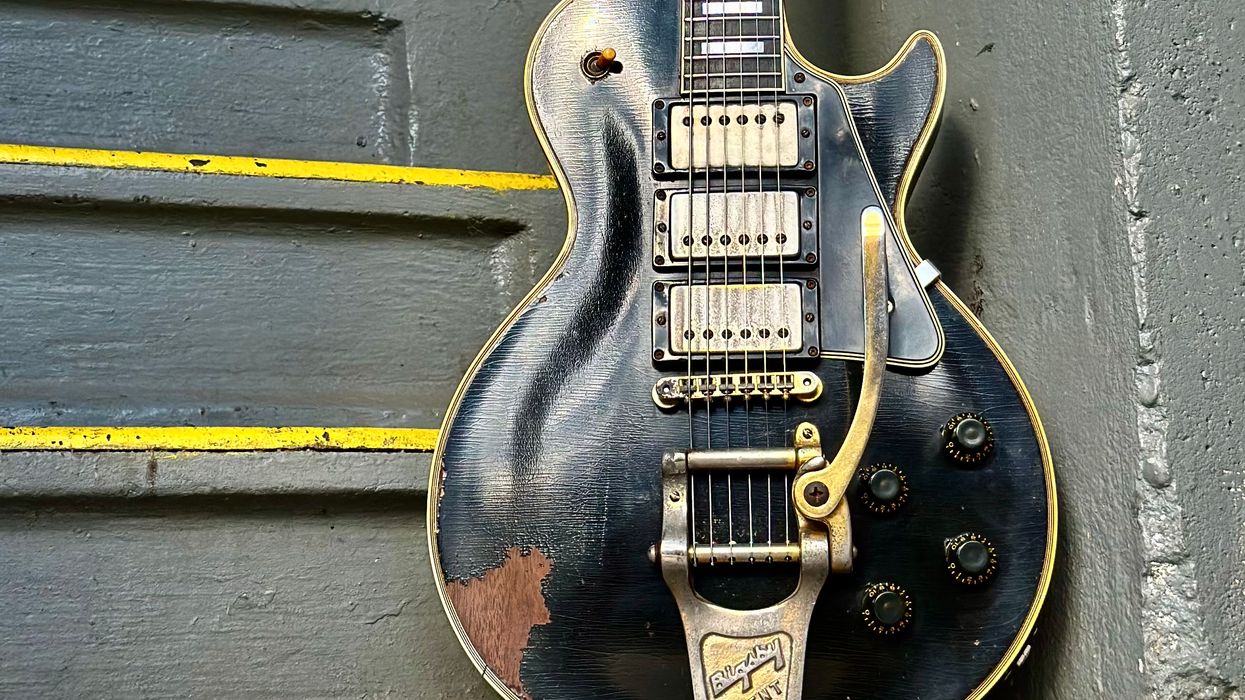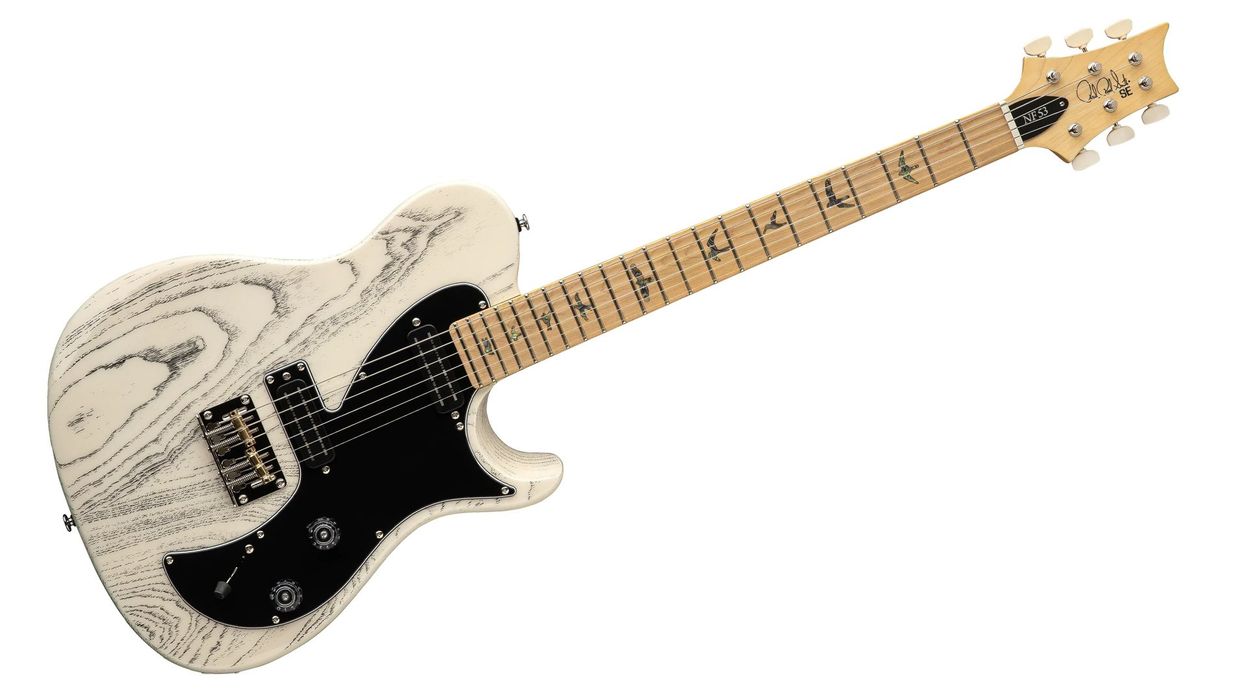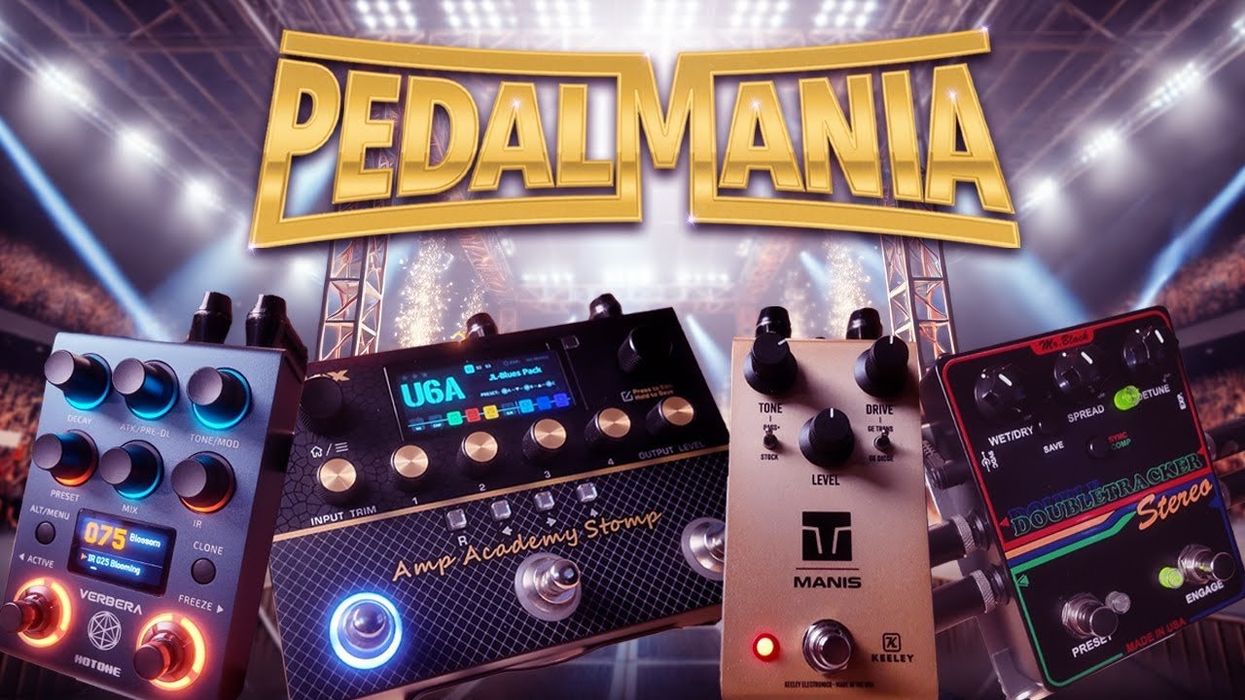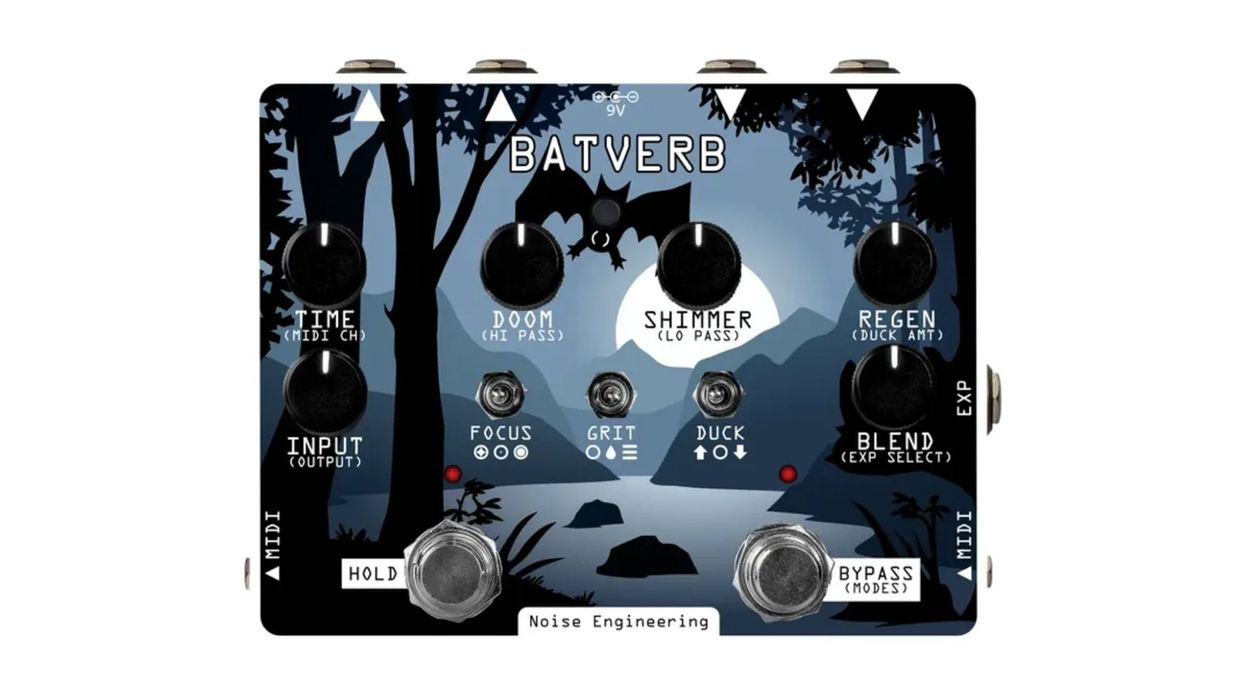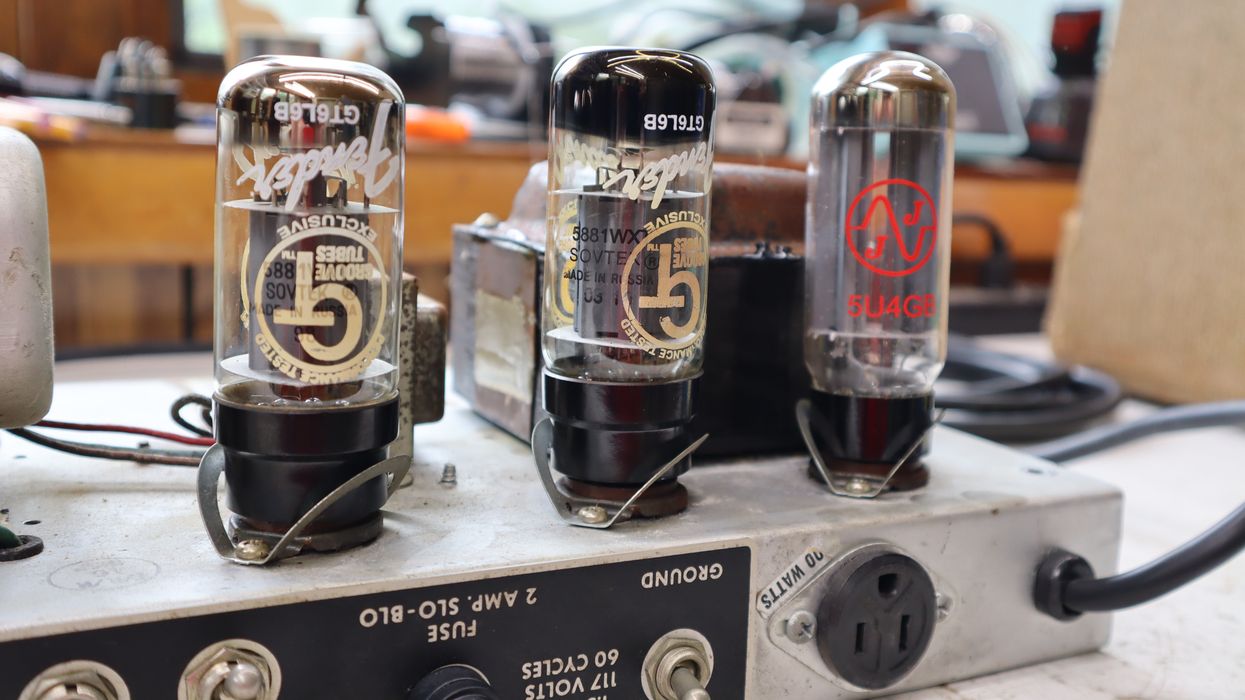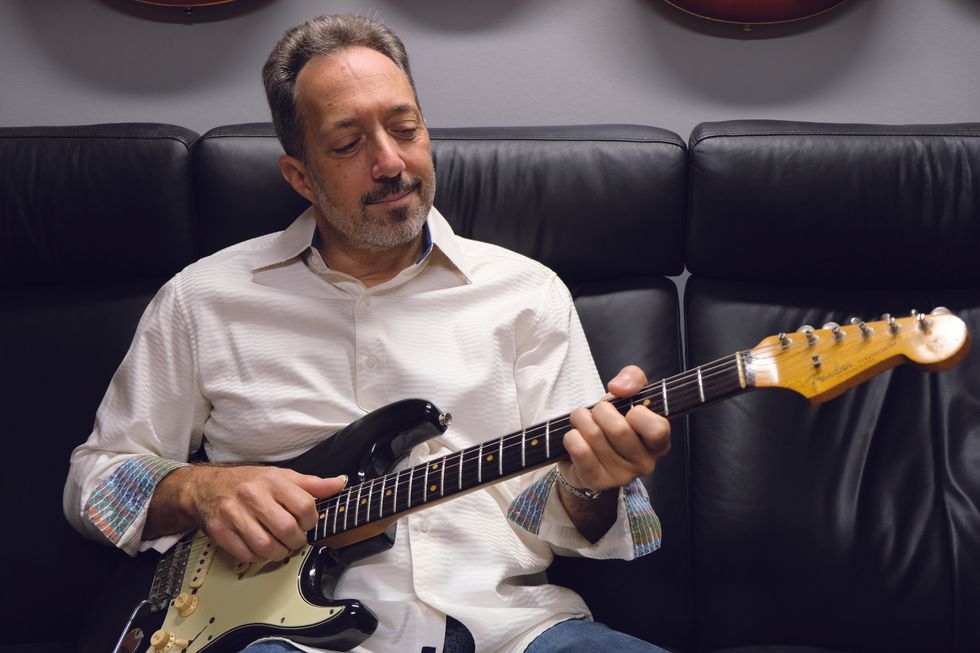Just as PRS's 2012 HXDA was inspired by firsthand looks at one of slide legend Duane Allman's amps from his seminal At Fillmore East performance, the brand-new HX 50 is the result of Paul Reed Smith and PRS amp guru Doug Sewell getting extensive access to a Marshall head reportedly used by Jimi Hendrix during his iconic performance at the 1969 Woodstock festival.
That amp—a circa-'68/'69, 100-watt Super Lead modified for Hendrix by Dave Weyer of West Coast Organ and Amp—currently resides at the Museum of Pop Culture in Seattle, Washington, and Smith and Sewell's perusing of the circuit was made possible by the museum's proprietor, Microsoft cofounder Paul Allen. Lending additional credence to the original amp's provenance and pedigree, a small stenciling of the "Authentic Hendrix" badge appears on the HX 50's rear panel to indicate endorsement by the late guitarist's estate.
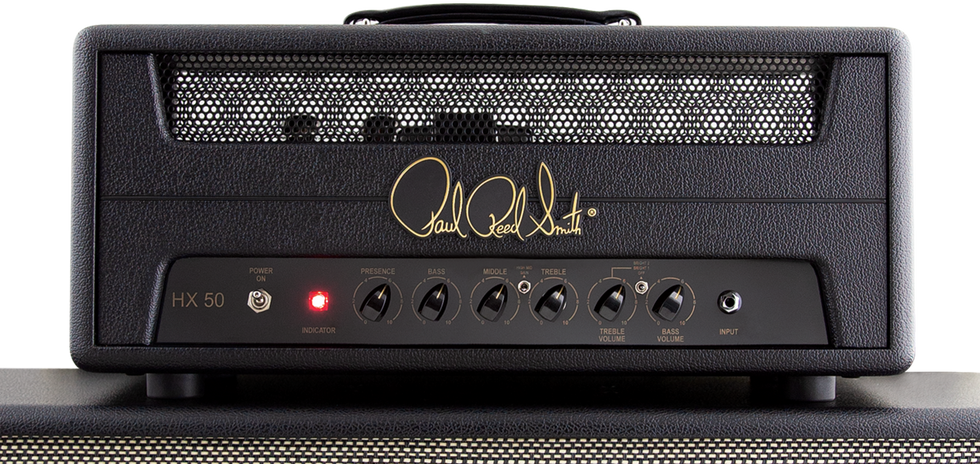
Under the Hood
The HX 50 reviewed here is powered by a pair of New Sensor EL34s and it uses a custom power supply whose rectification and capacitor arrangements are exactly like the 100's. Ostensibly, this avails more reasonable volumes and easier breakup while helping to imbue the amp with headroom and responsiveness more like the 100. The circuit is meticulously handwired on a thick (2 mm), 2-sided, through-hole printed circuit board—which, in a nice homage, is purple rather than the typical green. A trio of 12AX7s drives a preamp with presence, bass, middle, treble, treble volume, and bass volume knobs, as well as an off/on high-mid toggle and a 3-position brightness selector. While vintage Super Leads like Hendrix's Weyer-modified Marshall feature four inputs—which many famous players have "jumpered" (connected in series using a 1/4" patch cable) to tap more gain from the circuit, the HX 50 and 100 have a single input that's internally jumpered to the same effect.
By way of explaining the deviations from vintage-plexi architecture, Sewell says, "This is not a painstakingly historical recreation of the amplifier Hendrix used, but a snapshot in the development of a series of modified amps he came to use on tour and in the studio. Consideration was given to reliability, compatibility with his effects and guitars, the tones he achieved, and the feel and response of the amp."
In most cases I found myself turning outboard boost or gain pedals off before long, preferring the HX 50's beautifully articulate and open-feeling power-amp distortion—although a vintage-voiced germanium fuzz sounded as Hendrix-y wonderful as I could've hoped.
Castles Made of Sound
I tested the HX 50 (through the accompanying PRS cab featuring two Celestion G12H-75s) using a Strat, a Jazzmaster with Curtis Novak JM-V and JM-Fat pickups, a '57 Classic-loaded Les Paul, and a Schecter Ultra III equipped with a TV Jones Magna'Tron. From the outset I was impressed with the low noise floor, even at very loud and saturated settings. I didn't really hear any hum or squealing unless I was very close to the amp and using single-coils or slathering on gain from a stompbox. (On the latter point, in most cases I found myself turning outboard boost or gain pedals off before long, preferring the HX 50's beautifully articulate and open-feeling power-amp distortion—although a vintage-voiced germanium fuzz sounded as Hendrix-y wonderful as I could've hoped.)
As you'd expect from an amp inspired by a vintage classic, the range of tones available from the HX 50's EQ is moderate compared to some modern designs, but in terms of what you'd expect from a procured plexi, it's impressively wide ranging. With humbuckers or single-coils, I had no trouble making any guitar chime, sing, or sting—or the other way around—using just the knobs. The presence and mid controls can either sharpen your guitars' teeth or imbue them with a more "American," scooped-mid cushiness. Meanwhile, facile combinations of the treble and bass channel volumes—or even dialing one out completely—further the lean-and-clean(-ish) to velvety-thick possibilities. (Interestingly, even as a favorer of bright-ish single-coil tones, I rarely felt the need to engage the high-mid or bright toggles—neither of which were featured on the reference Marshall, although players of darker-sounding instruments or users of extensive outboard effects might appreciate their inclusion.)
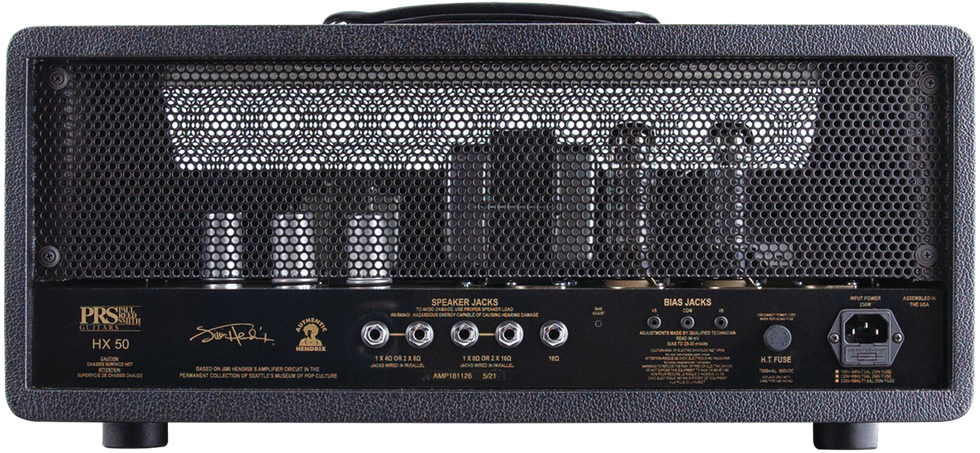
Further, while the HX 50 certainly won't pummel like, say, a Mesa Rectifier or a Diezel through a Rivera sub, for its size and power, it's impressively punishing in the lower registers. Enough so that, at more aggressive settings, even the middle position on my Jazzmaster threatened to vibrate the head toward its cab-diving demise (thank you, Gorilla Tape!). Meanwhile, even at low channel volumes (treble volume at 2 and bass volume at 1, with presence and bass dimed, made for a lovely pedal platform), the HX 50 sounds virile and open, yet is also loud enough to hang with a reasonably volumed band.
The Verdict
In terms of construction, tones, and versatility, the PRS HX 50 is a lovely brute of an amp worth trying regardless of your affinity for Hendrix or his tones. Sure, it can help you get to hazy-purple realms if you're so inclined, but for me it was even more fun to discover a slew of sounds that work for what I do. Whichever way you dial it, it's a damn good-sounding vintage British-style specimen.






